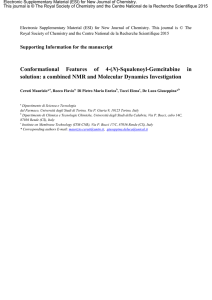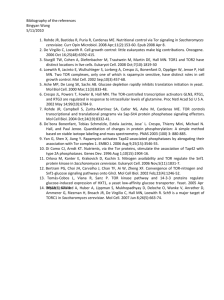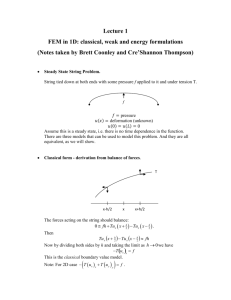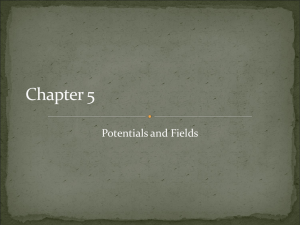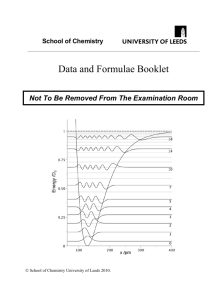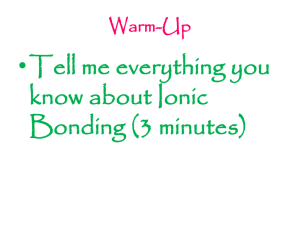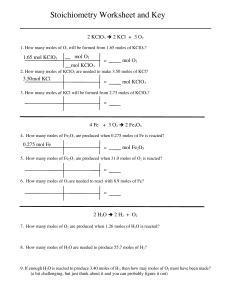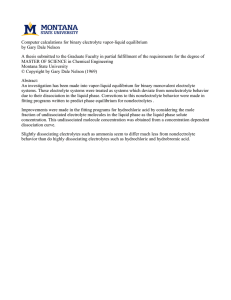AP Chemistry, Quiz on Chapter 4
advertisement
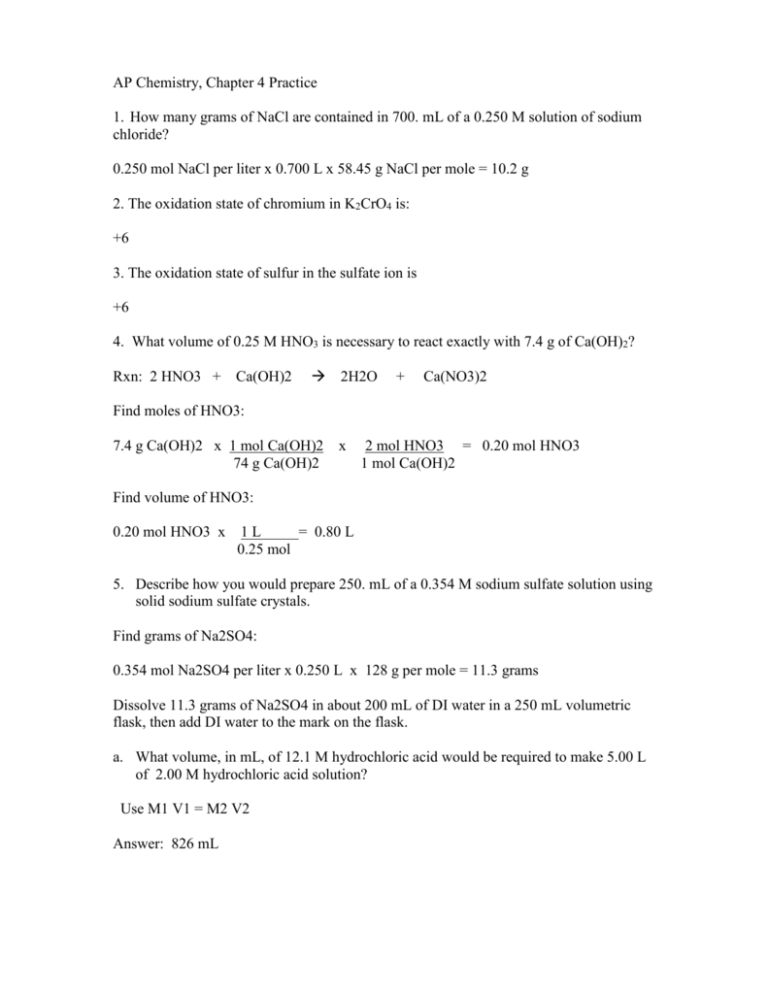
AP Chemistry, Chapter 4 Practice 1. How many grams of NaCl are contained in 700. mL of a 0.250 M solution of sodium chloride? 0.250 mol NaCl per liter x 0.700 L x 58.45 g NaCl per mole = 10.2 g 2. The oxidation state of chromium in K2CrO4 is: +6 3. The oxidation state of sulfur in the sulfate ion is +6 4. What volume of 0.25 M HNO3 is necessary to react exactly with 7.4 g of Ca(OH)2? Rxn: 2 HNO3 + Ca(OH)2 2H2O + Ca(NO3)2 Find moles of HNO3: 7.4 g Ca(OH)2 x 1 mol Ca(OH)2 74 g Ca(OH)2 x 2 mol HNO3 = 0.20 mol HNO3 1 mol Ca(OH)2 Find volume of HNO3: 0.20 mol HNO3 x 1L = 0.80 L 0.25 mol 5. Describe how you would prepare 250. mL of a 0.354 M sodium sulfate solution using solid sodium sulfate crystals. Find grams of Na2SO4: 0.354 mol Na2SO4 per liter x 0.250 L x 128 g per mole = 11.3 grams Dissolve 11.3 grams of Na2SO4 in about 200 mL of DI water in a 250 mL volumetric flask, then add DI water to the mark on the flask. a. What volume, in mL, of 12.1 M hydrochloric acid would be required to make 5.00 L of 2.00 M hydrochloric acid solution? Use M1 V1 = M2 V2 Answer: 826 mL 6. Predict the products of the following reactions. Where a reaction occurs, write the net ionic equation. If no reaction occurs, write “N.R.” a. iron (II) sulfate solution and barium chloride solution Ba2+ (aq) + SO42-(aq) BaSO4(s) b. zinc nitrate solution and magnesium chloride solution NR! c. mercury (I) nitrate solution and potassium chloride solution Hg2 2+ (aq) + I - (aq) Hg2I2(s) d. sodium chromate solution and copper (II) nitrate crystals NR! 7. What is the maximum mass of aluminum hydroxide that can be produced when 25.0 mL of 0.248 M sodium hydroxide solution are mixed with 25.0 mL of 0.189 M aluminum nitrate solution? Balanced eq: 3NaOH(aq) + Al(NO3)3(aq) Al(OH)3(s) + 3NaNO3(aq) Find mols of each reactant: 0.00620 mol NaOH 0.00472 mol Al(NO3) Limiting reagent: NaOH, since you need 3 times as much NaOH than Al(NO3) and you don’t have it. Use mol NaOH to find amount of product. 0.00620 mol NaOH x 1 mol Al(OH)3 per 3 mol NaOH = 0.00207 mol Al(OH)3 Mass Al(OH)3 = 0.161 grams using 77.98 g Al(OH)3 per mole. 8. Indicate which of the following are redox reactions. For those that are redox reactions, label the reactant that is the oxidizing agent and the reactant that is the reducing agent. You do not have to balance these reactions! a. C2H6 + O2 R.A b. not redox! CO2 CO2 + H2O Li2CO3 O.A. + LiOH + H2O c. PCl3 + Cl2 R.A. PCl5 O.A. 9. Aqueous dichromate ion reacts with aqueous cyanide ion (CN-) to produce chromium (III) ion and aqueous cyanate (CNO-) ion. Balance the equation using the half-reaction method, assuming the reaction occurs in acidic solution. Rxn: Cr2O7 2- + CN- Cr3+ + CNOHalf reactions: 6e- + 14H+ + Cr2O7 2- 2Cr3+ + 7 H2O (H2O + CN- CNO- + 2H+ + 2e-)3 final: 3CN- + 8H+ + Cr2O7 2- 2Cr3+ + 4H2O + 3CNO10. Balance the following redox reaction in basic solution. I2 (6H2O + - ClO3 (aq) - IO3 (aq) + - Cl (aq) I2 2IO3- + 12H+ + 10e-)3 (6e- + 6 H+ + ClO3- Cl- + 3H2O)5 final: 6OH- + 3I2 + 5ClO3- 6IO3- + 5Cl- + 3H2O
